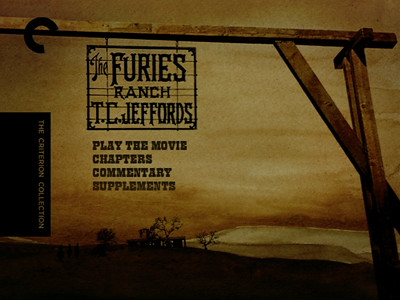
In Greek and Roman mythology, the Furies are avenging spirits whom act on behalf of the wronged dead. Portrayed as female, and often three in number, they have appeared in works by Virgil and Dante and can be seen as the inspiration for the three witches in Shakespeare's Macbeth. In Anthony Mann's 1950 film adaptation of Niven Busch's cowboy novel The Furies, that is the name given to the ranch run by the hard-living T.C. Jeffords (Walter Huston), and the sprawling landscape takes on the significance of these spirits. The land itself is spoken of as if it were an entity, invoking the power of the elements themselves, controlling the lives of all that live within and orbit around its borders. In that way, this Furies is also a little like those other mythical women, the Fates, working their looms to weave the destiny of man.
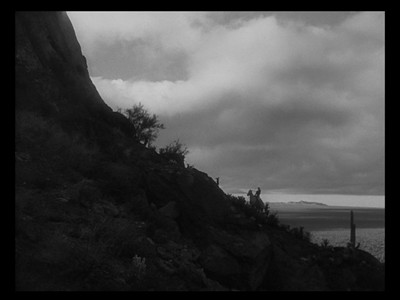
The basic story of The Furies (the screenplay is by Charles Schnee) is not that different from other family drama westerns. A father runs his ranch, tries to dominate his children, one proves more headstrong than he envisioned, and they lock horns. The movie's trappings are different than a regular western, though, with stronger psychological and metaphorical significance than your standard shoot 'em up. With its gender shake-ups, The Furies is to westerns what Leave Her to Heaven
T.C. spends most of his time gallivanting around the country, spending money he doesn't have and leaving his daughter, Vance (Barbara Stanwyck), to take care of the business and cover his debts. Theirs is a strange, competitive relationship, uncomfortably close, with daddy's little girl wrapping the old man around her finger and stubbornly getting her way. Roles amongst T.C.'s children are reversed. Normally it's the son who would perform these tasks, but Clay (John Bromfield) is meek and too quick to kowtow. He dresses like a cowpoke dandy, and isn't much of a man. In the movie, across the board, Mann is suggesting that the true controlling force of civilization is female. Vance later sees her future self reflected in the wife of a wealthy banker (Beulah Bondi), realizing that men's fancies are easily manipulated, and it's up to women to stay steady.
The dead that has to be avenged in The Furies is the late Mrs. Jeffords. We know little about her, just that when she needed her husband the most, he abandoned her. As penance, he preserves her bedroom exactly as it is, forbidding all else to enter. Every time T.C. returns from one of his excursions, he spends an hour in there, paying tribute. The memory of Mrs. Jeffords is felt everywhere on the ranch. She can even be seen as the first in the traditional three Furies, an active force in her own revenge. In the first scenes of the movie, Vance wears her mother's old dress in preparation for her brother's impending wedding, and the mantle is passed.
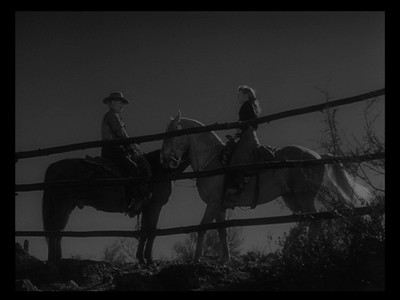
The third Fury, then, is probably Flo Burnett (Judith Anderson), the gold digger that T.C. brings back to the ranch. After T.C. ruined his daughter's chances of marrying Rip Darrow (Wendell Corey), the son of a man whom T.C. feuded with, swindled, and killed, making him the second of the wronged dead--Vance has devoted herself to running the homestead, and the introduction of another woman threatens her position as the future head of the Furies, as well as her relationship with her father, which at this point is almost like a marriage itself. In order to reassert her proper authority, Vance attacks Flo, marks her, and thus makes her complicit in the plot to ruin T.C. by keeping her from completely joining with her new husband. It's fitting that Vance wounds her eye, as it causes her to see T.C. and his faults clearly. Again, there is a switch-up. T.C.'s actions against Rip were to show his daughter what kind of man she thought she loved, and Vance then does the same for Flo. The attack is vicious, but also expertly framed by Mann, who uses mirrors to show the audience the secrets his characters would sooner conceal.

This is where the story shifts into high-gear Greek tragedy. Banished from her father's kingdom, Vance takes to the hills to seek shelter with her best friend since childhood, Juan Herrera (Gilbert Roland). The Herreras are one of two Mexican families who continually squat on the ranch, insisting on their rights as the indigenous people who first populate the area. When T.C. and his feral right-hand man El Tigre (Thomas Gomez) attack the Herrera home in an attempt to drive them and Vance off the Furies, the old man once again invokes the wrath of the land. He also creates another angry spirit that will need to be avenged, and it becomes an important component in his downfall.
T.C. continually tries to assert himself as the ruler of his particular wilderness, and he continually fails. He performs a great feat of strength by wrestling to the ground an untamable steer nicknamed "the King of the Furies." Little does he know that in doing so, he is subduing his own majesty. It's the last of the cattle to be rounded up, and with that act completed, all those that he has wronged can now move against him.
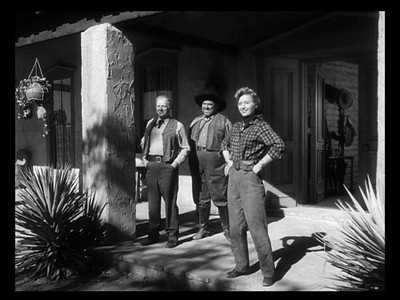
Vance is an interesting character. For as much as she is meant to take on male responsibility, she maintains her traditional femininity. She can never completely shed her compassion, and she is always ready to forgive her father, right up until the end. Her justice would come with balance, and part of setting right all of the grievous wrongs T.C. has committed against the land and its people, to prevent further tragedy, is to honor the family line and the traditions that he constantly ignored. She will restore what is rightfully theirs to the Darrows and the Herreras, but she must also pay the proper respect to the accomplishments of her father. Barbara Stanwyck was probably best known for these kinds of roles, modern women who could hold their own in a man's world without sacrificing their womanhood. It's probably her iconic status that allows her to slip into the western genre without it seeming jarring or campy, the way Joan Crawford comes across in Johnny Guitar. Traditionally, women have very specific roles in westerns, and Stanwyck dismantles them all.
At the same time, her character will also have to be dismantled. There is a connection to the femme fatale here, and in that Vance has to be at least partially neutralized. Though she does not have to surrender all of her independence, embracing that traditional femininity does require that she ease back at least some. Her relationship with Rip Darrow becomes her key back to her birthright, and their union is also essential to ensuring that the cycle of disaster stops.
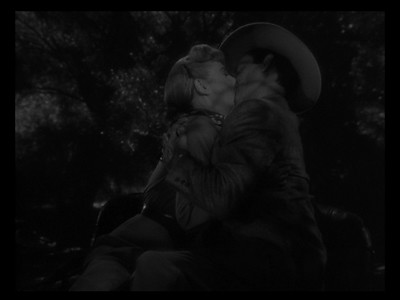
The other great performance of the film is from Walter Huston, whom was a seasoned pro and already a legend of cinema at this point. He was a chameleonic performer, able to play oddball characters like the prospector in the previous year's Treasure of the Sierra Madre
Anthony Mann's direction is also a star unto its own right, capturing the wide expanses of the ranch as well as the ominous weather patterns that signal the coming doom. Though the filmmaker is best known for more manly pictures, including several two-fisted noir pictures and a series of westerns with Jimmy Stewart, his handling of the interior drama in The Furies shows he was just as comfortable in the bedroom as he was out on the plains.
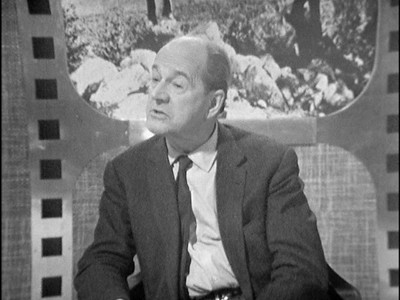
Anthony Mann
Criterion has come up with a near-perfect transfer of The Furies. Shown in full frame (though pictureboxed), the 1.33:1 black-and-white image is free of blemishes and nicely rendered so as to capture all of the tonal subtleties.
All of the stops have been pulled out for the packaging for The Furies – Criterion Collection. The disc itself is in a cardboard case with a plastic tray, and it includes a pocket for the accompanying booklet. The 36-page supplement features stills from the movie, chapter listings and credits, an essay by critic Robin Wood, and a 1957 interview by Charles Bitsch and Claude Chabrol that was originally printed in Cahiers du cinema. Along with this is a brand new printing of the original Niven Busch novel that the movie was based on. The DVD sleeve and the 268-page novel both fit snugly in a sturdy outer box. Each element also follows the same design model so that everything is of one piece, making a unified collection.
Of the documentaries on the disc, my favorite by far was a section from a 1967 episode of the British TV show, The Movies, focusing on Mann and titled "Action Speaks Louder than Words." This 17-minute excerpt has Mann sitting down to discuss his theories of drama and why westerns are an ideal genre for it, as well as his philosophy on violence and heroism. Though The Furies is not discussed directly, many of his other westerns are. There aren't clips from these movies, just still frames, but some of what is discussed includes scenes that were deleted to meet demands of the censorship board, which fits some of what Mann has to say about how we react to seeing the darker side of action.
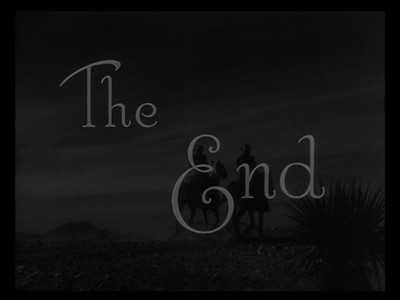
All said and done, The Furies – Criterion Collection is a top-shelf package for a unique western. Directed by bruised-knuckled filmmaker Anthony Mann, the psychological drama matches the sweeping emotions of Greek tragedy to the wide open American plains. Barbara Stanwyck shines in a fascinating role of a woman at odd with her gregarious father, played with exuberance by Walter Huston. Daughter goes against father for the ownership of their massive ranch, subverting traditional family roles and playing out the drama to its most catastrophic end. The passions run hot, and the graves are cold.
For full technical specs and all the special features, read the full article at DVD Talk.

No comments:
Post a Comment